Latest reviews
Pricey, but there’s great music playing, good drinks, and overall a nice atmos.
Went here for dinner. Had the Irish stew and a pint of Guinness. The service was good, the staff were really friendly, the food was delicious, and they had a pretty good selection of ales.
Would highly recommend.
In einer sehr gut erreichbaren Lage in Warschau liegt dieses Hotel der Radisson-Kette. Vom Hauptbahnhof mit der S-Bahn nur eine Station und auch mit der Straßenbahn ist dieses Hotel sehr gut angebunden. Sorgen wegen des Lärms durch die viel befahrene Straße direkt am Hotel muss sich der Gast auf jeden Fall nicht machen, die Zimmer sind sehr gut akustisch abgeschirmt.
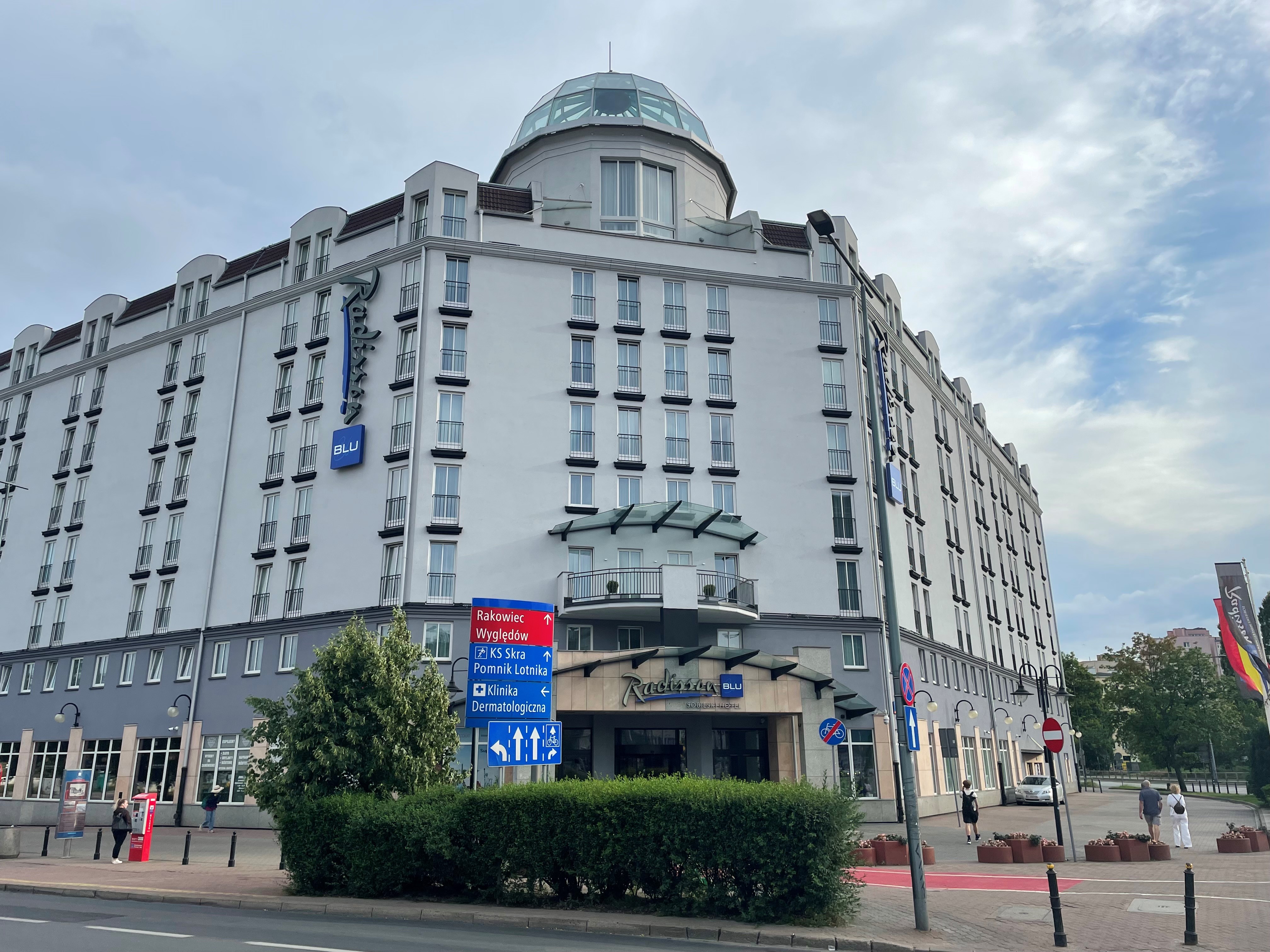
Aussenansicht des Radisson Blu Sobieski Hotels in Warschau (Eigenes Werk. Lizenz: CC-BY-SA.)
Die Rezeption ist freundlich, gut organisiert und schnell. Wer die Daten im Online-Check-In hinterlegt hat nimmt seine Zimmerkarte in Empfang und hat den Prozess innerhalb von ein paar Sekunden abgeschlossen. Mit dem Fahrstuhl schnell ins Zimmer und festgestellt, das auch dort alles wie gewohnt ist. Das Bett ist angenehm hart und im TV gibt es einige internationale Programm. Wer seine eigenen Medien konsumieren möchte kann seine Geräte mit dem TV kabellos verbinden.
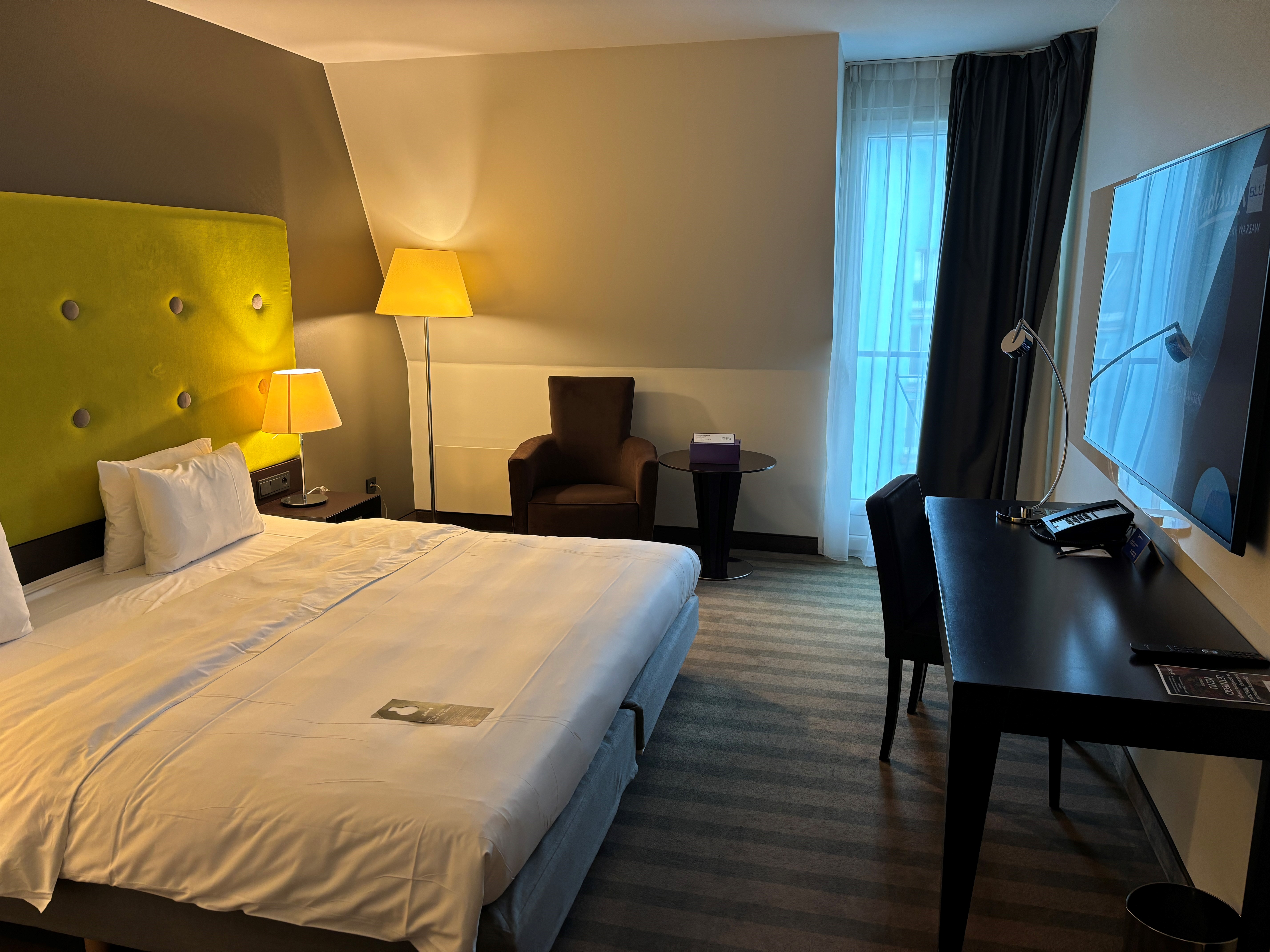
Zimmer im Radisson Blu Sobieski Hotel in Warschau (Eigenes Werk. Lizenz: CC-BY-SA.)
Nach einem Tag mit wenig Bewegung habe ich den Fitnessraum aufgesucht. Für Cardio, Kraft und Ausdauer sind einige Geräte vorhanden. Wer möchte kann sich auch eine Massage buchen. Die Becher am Wasserspender waren aus wurden aber nach einem Anruf an der Rezeption umgehend aufgefüllt. Daumen hoch für den Service. Auf dem Weg zurück ins Zimmer habe ich etwas gesehen, was ich sehr begrüße: Einen Kaffeeautomaten von Starbucks. Schnell noch einen Kaffee geholt. Tolle Sache.

Kaffeeautomat von Starbucks im Radisson Blu Sobieski Hotel in Warschau (Eigenes Werk. Lizenz: CC-BY-SA.)
Vom Frühstück habe ich keine Bilder aber ich kann es nur empfehlen. Ein reichhaltigeres Frühstück ist in dieser Preisklasse schwer zu finden.
Für einen Aufenthalt in diesem Hotel kann ich nur fünf Sterne geben und für jeden der nach warschau kommt eine Empfehlung aussprechen.
Speculative fiction from the era before the moon landing and the exploration of the solar system occupies a special place in my heart.
Writers from the 1930s, 1940s, and 1950s still dared to dream of life on Mars. Their imaginations had not yet been influenced and constrained by the slow progress of real-world space exploration, or by particular visions of the future like those popularized by Star Trek or The Expanse.
The Science Fiction Hall of Fame, Volume One was published in 1970 and contains a total of 26 stories first published between 1934 and 1963. The book includes 15 stories selected by a vote of the Science Fiction and Fantasy Writers of America and 11 stories picked by editor Robert Silverberg.
One cannot pick up such an old collection in 2024 without noticing the all-white and almost all-male selection of writers. The stories themselves, too, reflect the prejudices of their era. In “Helen O’Loy”, the perfect robot wife cooks, cleans, and adulates her husband; in “Twilight”, a time traveler from the future remarks on the wonderful music produced by “semicivilized peoples”.
Nevertheless, this collection includes some stories that are well worth your time. There are the classics that have inspired countless adaptations and imitations: “Microscosmic God” about a scientist who creates a civilization; “It’s a Good Life” about an omnipotent child; “Flowers for Algernon” about an intellectually disabled man who is turned into a genius by way of surgery.

The alien Tweel, depicted here by artist Emmanuel Lafont, is one of the unforgettable characters from “A Martian Odyssey” by Stanley G. Weinbaum. (Credit: Emmanuel Lafont. Fair use.)
The (at least to me) lesser known gems include “Mimsy Were the Borogoves” about children’s toys from the future, “Scanners Live in Vain” about humans bio-engineered to survive space travel, and “Surface Tension” about a civilization of tiny aquatic humanoids and their microbial helpers.
“Scanners Live in Vain” takes an imaginative leap that was still barely plausible in 1953: the idea that space travel causes conscious human beings to suffer and die due to an unexplained condition called “The Great Pain of Space”. Therefore, space travelers have to hibernate under the supervision of caretakers without the ability to feel.
It’s the kind of story unlikely to be written today, but it makes for a fascinating “what if” now. What if space travel had been like that?
Keeping its biases in mind, “The Science Fiction Hall of Fame” remains a useful starting point for exploring this era of speculative fiction. Except Silverberg, all the authors have passed away as of this writing. Their influence on how we think about the future — and the past — endures.
The full list of stories:
- “A Martian Odyssey” by Stanley G. Weinbaum
- “Twilight” by John W. Campbell
- “Helen O’Loy” by Lester del Rey
- “The Roads Must Roll” by Robert A. Heinlein
- “Microcosmic God” by Theodore Sturgeon
- “Nightfall” by Isaac Asimov
- “The Weapon Shop” by A. E. van Vogt
- “Mimsy Were the Borogoves” by Lewis Padgett
- “Huddling Place” by Clifford D. Simak
- “Arena” by Fredric Brown
- “First Contact” by Murray Leinster
- “That Only a Mother” by Judith Merril
- “Scanners Live in Vain” by Cordwainer Smith
- “Mars is Heaven!” by Ray Bradbury
- “The Little Black Bag” by C. M. Kornbluth
- “Born of Man and Woman” by Richard Matheson
- “Coming Attraction” by Fritz Leiber
- “The Quest for Saint Aquin” by Anthony Boucher
- “Surface Tension” by James Blish
- “The Nine Billion Names of God” by Arthur C. Clarke
- “It’s a Good Life” by Jerome Bixby
- “The Cold Equations” by Tom Godwin
- “Fondly Fahrenheit” by Alfred Bester
- “The Country of the Kind” by Damon Knight
- “Flowers for Algernon” by Daniel Keyes
- “A Rose for Ecclesiastes” by Roger Zelazny
Neu und mit modernen Ambiente präsentiert sich die Schmiede an der gleichnamigen Straße in Hannover. Und trotz Public Viewing zur EM gab es noch viele freie Plätze innen und auf der kleinen Freifläche. Sollte das ein Indiz sein? Meiner Meinung nach ja.
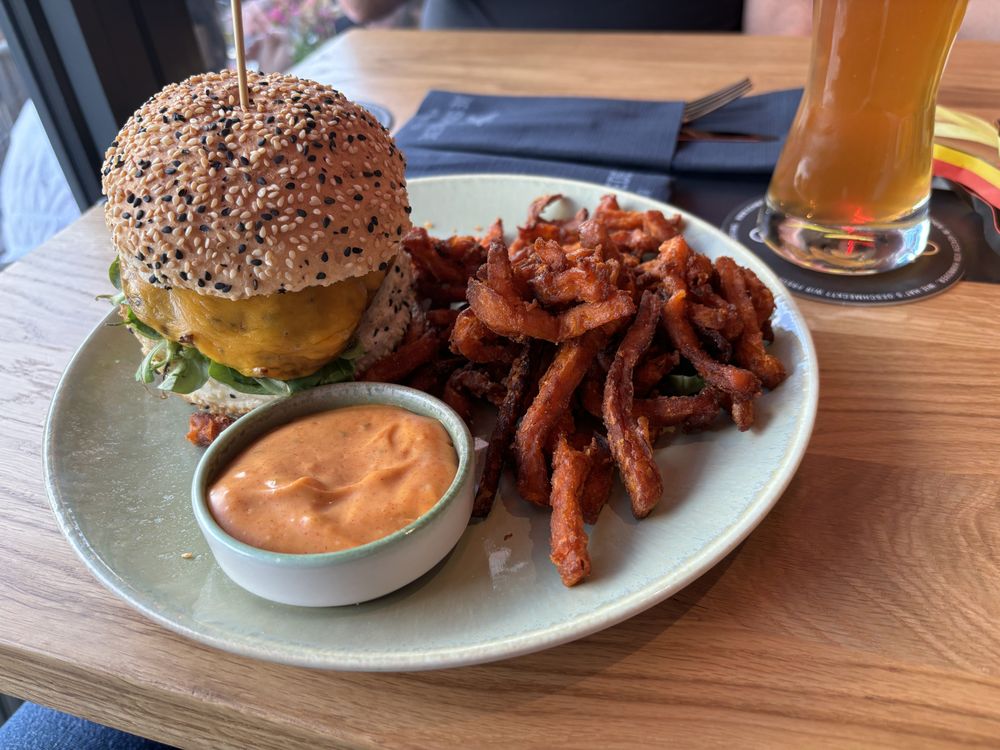
Burger im Restaurant Die Schmiede in Hannover (Eigenes Werk. Lizenz: CC-BY-SA.)
Die Schmiede reiht sich meiner Meinung nach nahtlos in die lange Reihe von Franchise-Restaurants ein. Ob es sich um ein Franchise handelt kann ich nicht mal sagen aber würde sehr gut passen. Hier gibt es wirklich kein Alleinstellungsmerkmal. Weder bei den Speisen, den Getränken oder sonst wie sticht die Schmiede hervor.
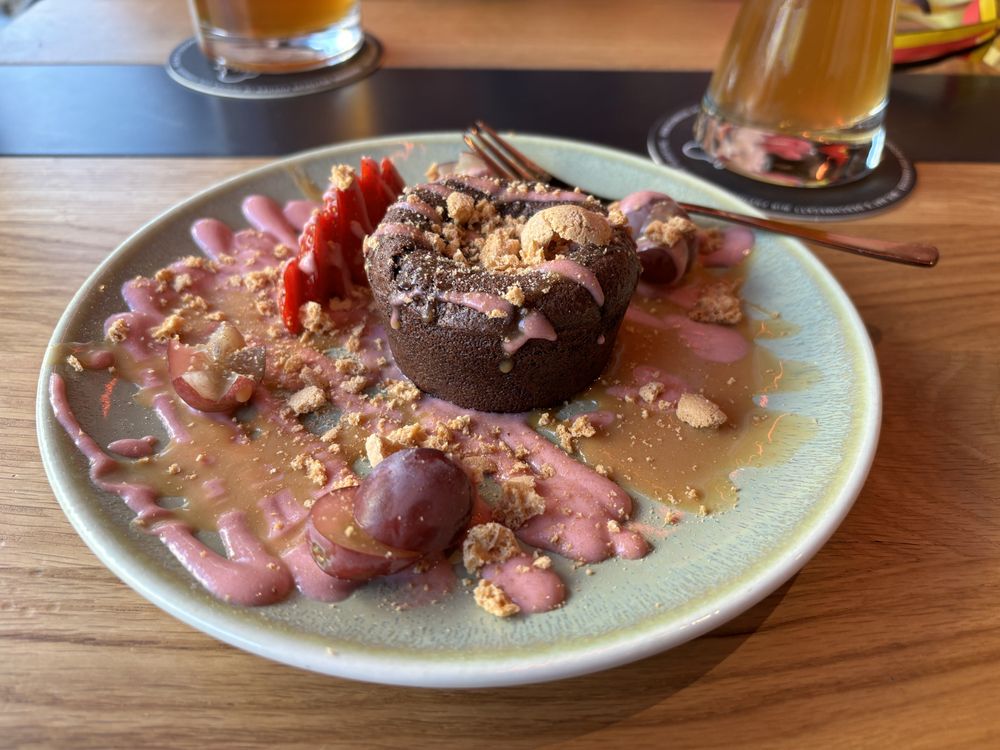
Burger im Restaurant Die Schmiede in Hannover (Eigenes Werk. Lizenz: CC-BY-SA.)
Die Burger wären sehr gut gewesen aber wieso wird an der Soße gespart? Es hätte ein wirklich sehr guter Burger sein können aber so trocken wird das nichts. Schade, denn die Süßkartoffelpommes waren gut kross und schmackhaft und auch mein Dessert konnte überzeugen. Leider kann ich vom Burger nur abraten. Aber es stehen ja noch andere Sachen auf der Speisekarte. Vielleicht haben einige Leser mehr Glück mit anderen Gerichten.
Sinnerman is a kind of hidden roof top bar in Belgrade. The entrance is quite difficult to find. Ask around if you cannot find it. The view is on busy traffic lanes with side walks with pedestrians. They played great music and the prices were affordable. I recommend to go and have a drink there if you happen to be in Belgrade.
Side note: I could not find a website of this bar, so I linked to the OpenStreetMap URL.
I like the concept for free reviews a lot. Lib.reviews is bases on free and open source software and linked data concepts. This allow you to review anything based to the URL of it.
Rai Urban Vege is a restaurant with indoor and outdoor seating. All dishes, except one with cheese, are vegan.
If you like to eat vegan food and are in Belgrade, I highly recommend to try Rai Urban Vege.
Note that the websites looks like it is a catering company, but it is a great place to go out and eat.
While sightseeing in Copenhagen, I had a burger-shaped hole in my stomach, so naturally I had to stop here to sample one of the vegan burgers. All patties house-made, don’t ya know. Sadly, the regular patty was already sold out, but Robin had put together a replacement, which, I’m sure, tasted just as fine. It’s a tiny joint with super tasty ice tea and a free Mortal Combat machine - gives you something to do while waiting for the food (not that it was a long wait). The Roots-n-Green Burger was super tasty as were the fries. Highly recommended for a centrally located burger stop in Copenhagen.
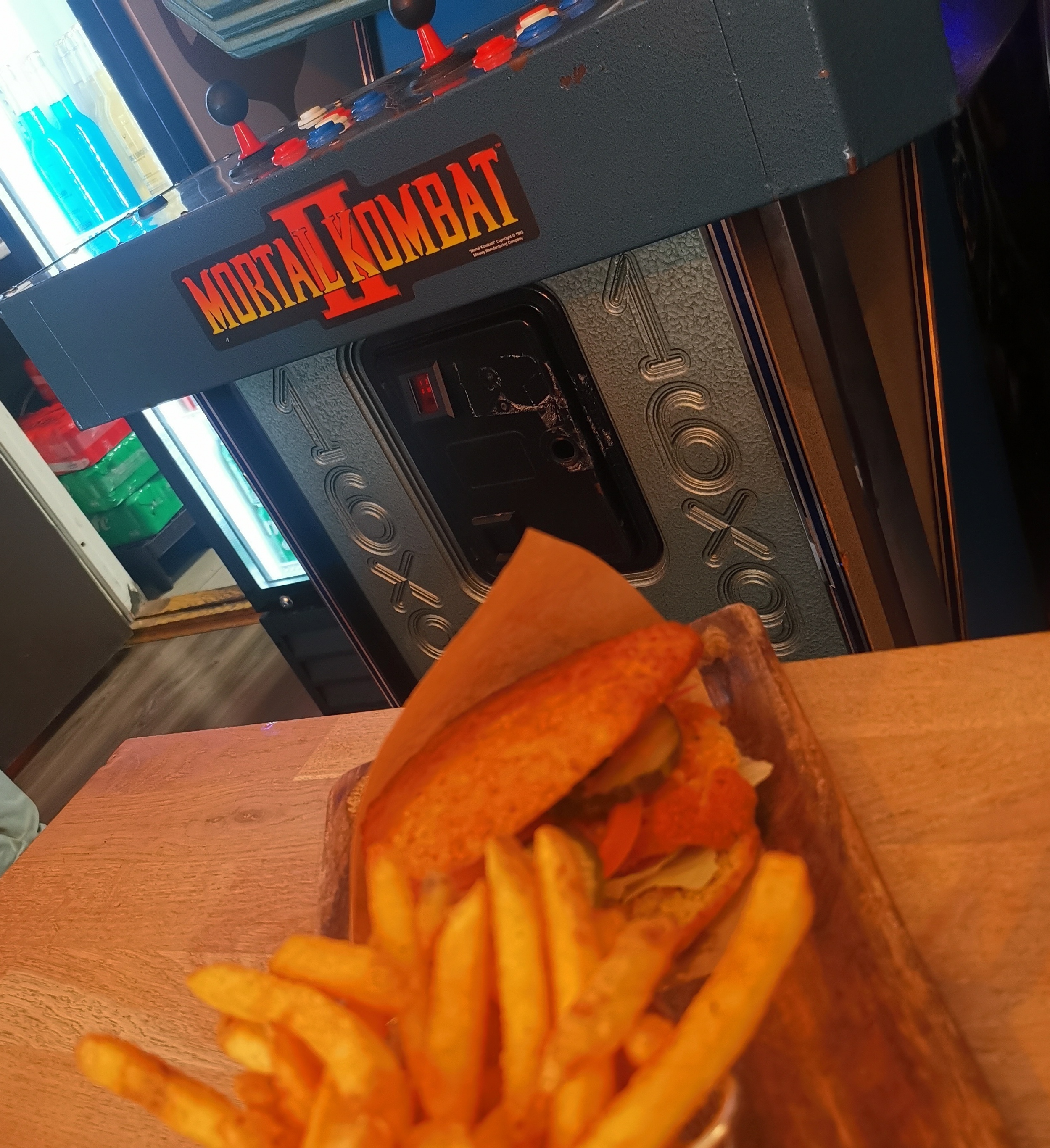
Roots-n-Green Burger at Bob’s Streetfood in Copenhagen. (Own work. License: CC-BY-SA.)
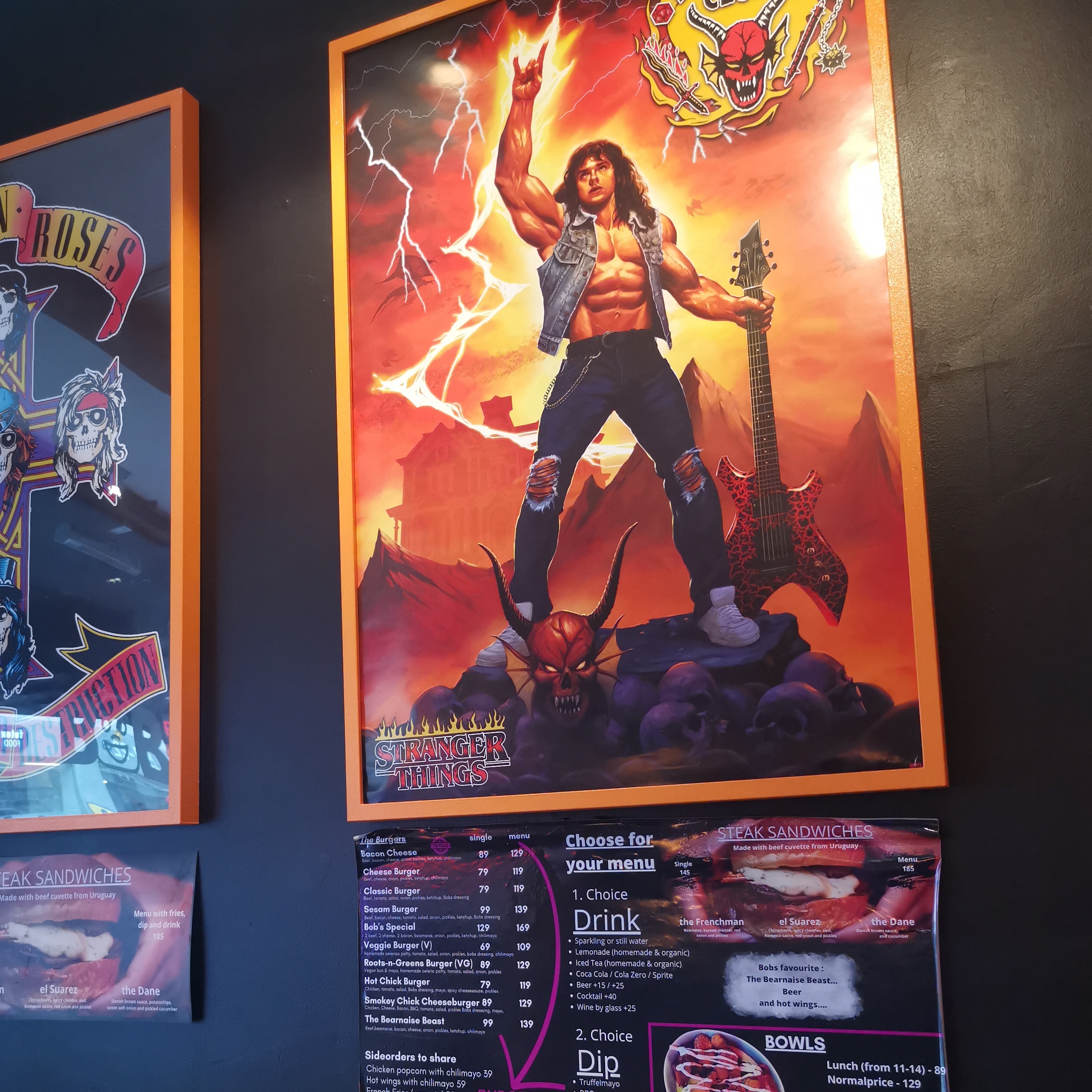
Interior, Bob’s Streetfood Copenhagen. (Own work. License: CC-BY-SA.)
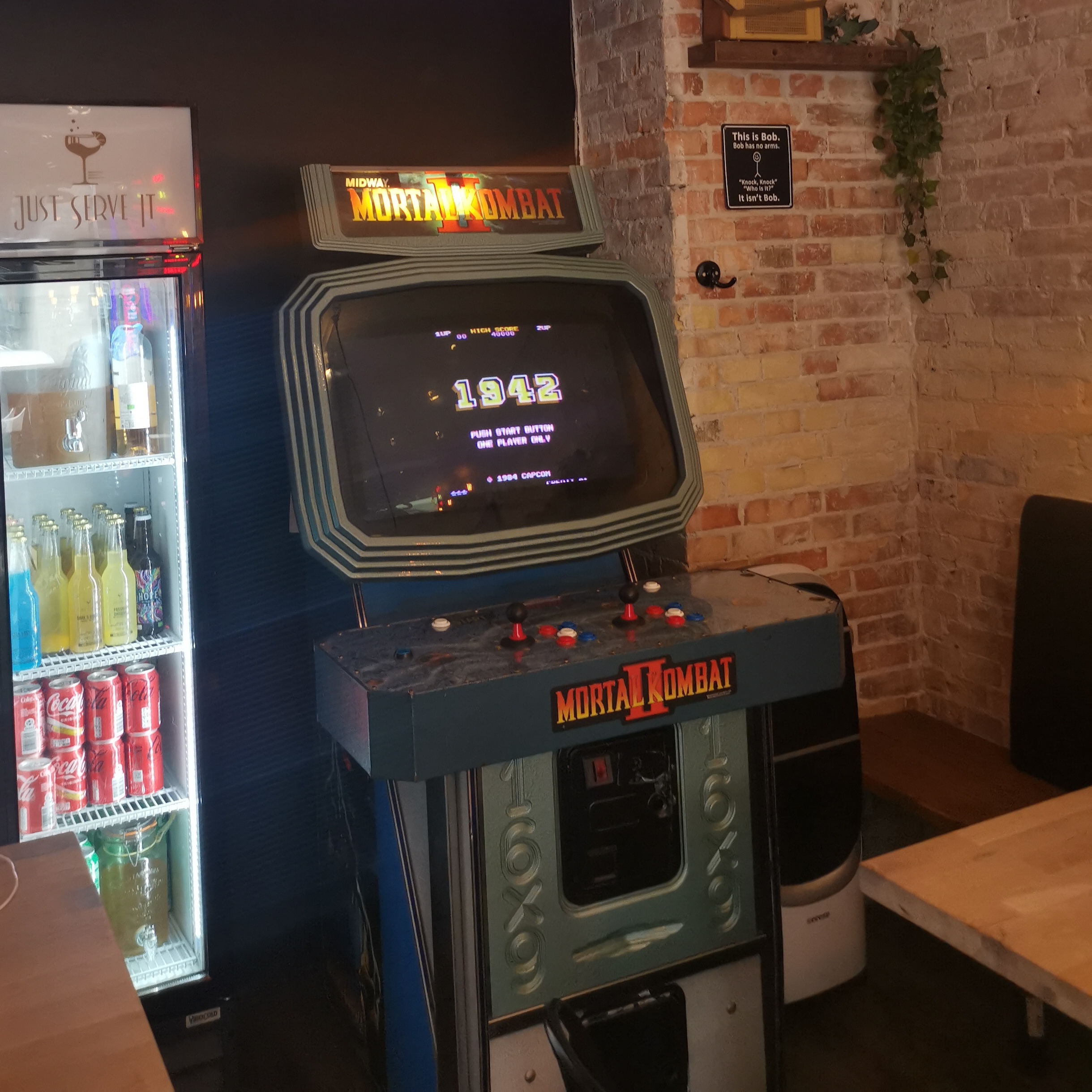
Interior, Bob’s Streetfood Copenhagen. (Own work. License: CC-BY-SA.)
Etwas “weiter draußen”, genauer gesagt in Empelde vor der Toren Hannovers, liegt das Hotel und Restaurant Öhlers. Ziel unseres heutigen Ausflugs auf Grund der Empfehlung eines Freundes. Klassische Restaurantatmosphäre und eine ebensolche Karte wurde uns versprochen und das Versprechen wurde voll und ganz erfüllt.
Wiener Schnitzel im Restaurant Öhlers (Eigenes Werk. Lizenz: CC-BY-SA.) Die Karte ist fast durchweg traditionell geprägt und schlicht gehalten. Der Fokus liegt auf einigen Gerichten welche im Baukastenprinzip ergänzt werden können. Diese Reduzierung gefällt mir denn sie verspricht eine gute Qualität bei wenig angebotenen Speisen. Und das von mir gewählte Wiener Schnitzel hat mich nicht enttäuscht. Dünn, zart und knusprig – so wie ich es am Liebsten mag.
Pana Cotta im Restaurant Öhlers (Eigenes Werk. Lizenz: CC-BY-SA.) Zur Nachspeise gab es bei mir noch, etwas von der Tradition abweichend, eine Dana Cotta. Diese war ebenfalls sehr schmackhaft und hat den guten Abend im Restaurant Öhlers abgerundet.
